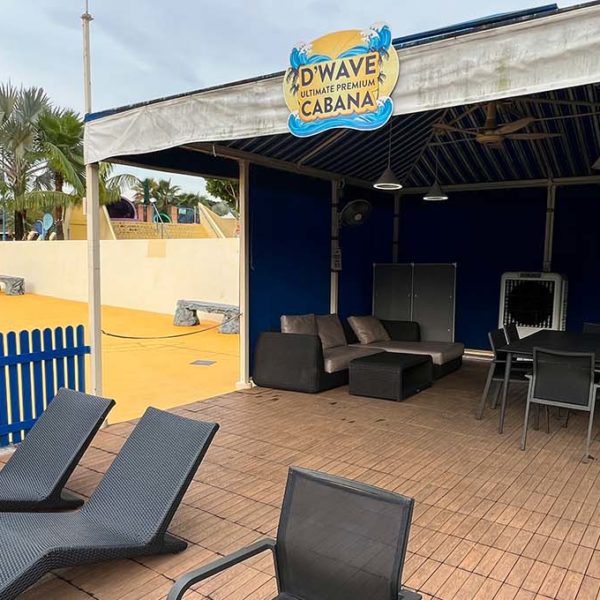In November of 2019, a friend of mine (the “claimant”) was seeking legal remedies after being cheated of his rental deposit by a HDB flat owner (the “landlord”). After two years of pursuing this case, we were finally able to recover the debt in May 2022. The time taken to recover the money highlights the tediousness in exercising a claim under the legal process, especially when dealing with a party that refuses to engage in good faith. Therefore, I think this post might be good to highlight what to expect if they are in the same situation.
Case Background
The claimant was a tertiary student living in Singapore alone and without family. He entered into a rental agreement with the landlord for a room inside the HDB unit from 3 August 2018 to 2 February 2019. On 12 December 2018, the landlord had requested to break their rental contract as he wanted his mother to move in by 2 January 2019. The claimant obliged and opted to move out on 31 December 2018.
On the day of moving out, unlike previously arranged, the landlord was unavailable to be present to inspect the room. Instead, he said his mother would be around to do so, and that the deposit of S$550 would be transferred to the claimant later. The mother was present for the inspection and not finding any issues with the room, retrieved the keys and expressed to the claimant that everything was in order.
However, the landlord later “found” cracks in the walls and floor, sending images that were close ups and refusing to show where exactly in the room these defects were. He refused to return the rental deposit, and subsequently blocked the claimant on all messaging platforms. To date, we are still unable to ascertain where the images purport to be, and the claimant refutes the allegations that they existed or were caused by him. Even if the damages were legitimate, we also sought an independent appraisal of the damages in the images, which should not have amounted to more than S$100 and certainly not more than the total sum of the security deposit.
When we visited his residence in November 2019, the landlord hurled vulgarities and refused to speak to us.
Small Claims Tribunal
Considering his refusal to deal in good faith, on 11 November 2019, we filed a claim against the landlord for the refund of the deposit of S$550 at the Small Claims Tribunal (SCT) for a fee of S$10. The SCT provided us with a document to serve the landlord, requesting that he be present at a hearing on 9 March 2020. We attempted to send this document multiple times via registered post, and the landlord only accepted the delivery on the 4th attempt.
The landlord failed the show up on the date of the hearing and the judgement by default was granted to the claimant. The SCT ordered that “The Respondent(s) do pay the Claimant(s) the sum of $ 550.00 plus $ 10.00 as disbursements [TOTAL: $ 560.00] by 09 April 2020, failing which the Claimant(s) may enforce the Order accordingly”.
The landlord as expected refused to pay up, which is when we realized the complexities of enforcing an Order.
Options Available for Enforcement
At this point, we had the option to choose between two legal remedies. The first is to start Garnishee Proceedings against the landlord, which would allow us to seize the Judgement Debt from his bank account. This would require us to furnish details of his bank account, along with filing an affidavit and other documents. Generally, this is a simpler solution for most if the details of the bank account are known, like in this case. However, there are cases such as if payment had been made by cheque, or if it is an employer refusing to pay a salary. In those cases, the bank account details might not be privy to the claimant.
The second remedy is to evoke by way of Writ of Seizure and Sale (WSS). This allows us to (with a court bailiff) gain access to the premises and seize property to auction off and cover the debt. To file for a WSS, we must show proof that the debtor owns the target premises and the properties within to be seized.
Upon filing the WSS and acceptance by the court, a date will be appointed where the bailiff will visit the premises to carry out seizure. However, the debtor may refuse entry or not be present on the first attempt. If this happens, the bailiff will provide the debtor a letter from the courts, then arrange for a second visit. On the second visit, the bailiff may exercise the power of forced entry, including arranging for a locksmith. Once inside the premises, property may be marked as seized at the claimant’s discretion for auction, should the debtor not settle the debt within a week.
Choice of Writ of Seizure and Sale
Because of the landlord’s continued refusal to engage with the claimant for the refund and the frustrating period of time we had been pursuing this case, we elected to choose the more punitive option of a WSS. Unfortunately, the amount owed is derisory, and no lawyer or debt collector is generally willing to take up a case with so low a return of interest. Additionally, after legal fees from the courts, the amount that can be recovered is almost nothing or even a loss.
However, it stopped being about the money long ago. We were also blessed to find lawyers Tianjun Lim and Zachery Tan of That.Legal LLC that took up the case pro-bono. The lawyers served a letter of demand to the landlord on 1 October 2021, giving him until 8 October 2021 to pay up. As no payment was received, the lawyers proceeded to file the WSS on 28 October 2021.
Since the landlord is a sole proprietor working from home, we were able to confirm his place of residence to the courts using Business Profile records from Accounting and Corporate Regulatory Authority (ACRA) for S$5.50.
The lawyers filed the WSS on our behalf including an additional S$400 in legal fees, together with S$10 for the WSS fees. The landlord then owed S$960. In filing the claim, we also had to pay S$214 to the Courts, along with a S$400 deposit.
On the first attempt on the court appointed date of 9 February 2022, the landlord and his family were not home (or refused to open the door despite repeated knocks). A “Notice for the Execution Debtor” letter was left under their door by the bailiff, and a second WSS was filed by the lawyers for another attempt.
On the second attempt on the court appointed date of 20 April 2022 the landlord was also not home. To call for a locksmith to pick the lock, we had to show more definitive proof to the bailiff that this was the current residence of the landlord. For this, we retrieved the Property Tax record of the residence for S$2.50 via Inland Revenue Authority of Singapore (IRAS)’s “Check Annual Value of Property” e-service, which shows the names of the owners of the unit.
Locksmiths charge by the number of locks they must pick. The first lock cost us S$150, with an additional S$50 for every subsequent lock. As the unit had two locks, we paid S$200 to the locksmith. Upon opening the door, the bailiff and lawyers entered the premises and marked out items to be seized up to the estimated value of S$960. This is done by sticking stickers with the State Courts logo on appraised items and leaving a letter demanding that he pay within seven days, or the bailiff will return to auction the seized items. During this time, the debtor may not remove or tamper with items that have been marked or they will be liable for theft, as the marked items are property of the bailiff.
This time, likely given the trauma of coming home to find someone else had been inside, the landlord reached out to the lawyers and expressed his desire to make payment in installments of three months. At this point, the landlord owed S$1200: S$550 for the judgement debt, S$400 for the costs of the writ, S$100 for the request of execution, and the Court commission and bailiff attendance fee of S$150.
As we felt that payment by installments opened additional avenues for the landlord to default, and that the sum was not a lot, we rejected the landlord’s request to pay by installment and issued another letter of demand for payment within a week, or the auction would be carried out.
At long last, the landlord made the payment on the last possible date, bringing this saga to a close.
Conclusion
Our case has taken a long time to play out, especially because we had to do a lot of research at the start. Overall, our timeline has been:
- 31 December 2018 – Claimant moves out of rental room, return of deposit refused, multiple contacts over the next few months ignored or blocked
- 11 November 2019 – Attempt to visit the premises, landlord acts hostile to us, SCT claim filed
- 19 November 2019 – Registered mail attempt to landlord to serve SCT notice, unsuccessful delivery attempts on 21st and 26th
- 20 December 2019 – Second registered mail attempt, unsuccessful delivery attempt on 23rd , successful delivery on 7th January
- 9 March 2020 – SCT Hearing, followed by months of research
- 1 October 2021 – Letter of Demand
- 28 October 2021 – Filing of WSS
- 9 February 2022 – First attempt for execution of WSS
- 20 April 2022 – Second attempt with forced entry, items marked as seized (deadline of seven days)
- 26 April 2022 – Contact from landlord, request to pay in installments
- 28 April 2022 – Request denied, letter of demand issued (deadline of seven days)
- 5 May 2022 – Debt recovered from landlord
The State Courts website asks claimants to consider four things when pursuing the above remedies:
- Whether it is worthwhile to pursue enforcing the order;
- Whether you are willing to pay the fees for enforcing the order;
- Whether the judgment debtor is able to pay you;
- Whether other enforcement actions are pending against the judgment debtor;
These considerations are quite evident in our case, as we essentially lost money pursuing the debt (each visit to the landlord’s residence costs the team about S$100 in Grab fees alone). Even if we had chosen to garnishee the landlord’s bank account, the time spent, and other legal costs would have not been worth it. Additionally, the landlord in this case presented a worst case scenario by refusing to engage in every opportunity resulting in repeated attempts, multiple delays, and additional costs – and fortunately stopped before the additional complexity of executing an auction.
That does highlight difficulties when it comes to small claims. It allows persons like this landlord to think they can get away with ignoring rightful claimants because the claim would be too small to be worth pursuing. We were fortunate to have the lawyers at That.Legal LLC who were willing to go through this process with us pro-bono and on principle, but others might not have the available time, knowledge, and money to pursue what they are rightfully entitled to.
This landlord did not count on the access to a lawyer and above all, did not count that he was against people with far too much time on their hands. The idea of legal forced entry into his premises must also be alarming for him – that locks do not matter. And with almost triple the damages handed to him, hopefully it will be a lesson that crime doesn’t pay.



Well done. Kudos for pursuing. Too many such people taking advantage of ordinary folks. Probably got advised by Rogue lawyers that no one will pursue for such small amount. So felt immune.
Hi there, thanks for sharing your experience. I am in a similar situation, having been awarded a money order for $5000 from SCT. The deadline for the judgement debtor to pay had passed and he is now completely unresponsive to my attempts at contacting him. I am curious about the part on Garnishee Proceedings and would be grateful if you could share more. I have documentary evidence that my debtor banks with OCBC but I do not know specifically, the account number. Are you aware if information on the actual account number is needed for Garnishee proceedings or would the name of the bank alone suffice? Thanks!
Hey, not a lawyer, but I believe you need the actual account number AND proof that the account belongs to them.
Really appreciate the quick reply!
Hello! Thanks for posting about your experience, you have no idea how helpful it is to so many of us going through the same thing!
This article gave me the knowledge and confidence to hold my ground against the landlord and get my deposit back. Thanks so much!
Hi, Thank you for sharing this. This article gave me hope to work my way against the landlord who held on to my good faith deposit after we failed to get a tenancy agreement signed. I will update and share my thoughts later! Thank you again!
Hi ETan, how did you register a complaint at the SCT? Currently going through something similar.
Hi, you can try going through the SCT guide here: https://www.judiciary.gov.sg/civil/file-small-claim
Thanks so much for sharing this. Could I find out how detailed/exhaustive must the witness statement needs to be? This seems to be a pre-Hearing step and I’m not sure how much to write for it. What was your / your friend’s experience with this?
Which part of the process is this for? If it’s for SCT, the process at the time we did it in November 2019 was to provide PDFs of evidence (rental agreement, property listing, screenshots of conversations), and a 500-character brief summary of claim. The summary we submitted was:
I, [Claimant] (NRIC), wish to file a claim amounting up to S$550.00/– against [Landlord] (NRIC). I rented a room from [Landlord] at [Address] from [Date] to [Date]. According to the rental agreement, I paid the amount of one month’s rental (S$550.00/–) as security deposit. [Landlord] has refused to return the rental deposit to me.
Not sure if the process is different for you now. Regardless, I’d imagine the details would be gone through proper when the case is heard.
I see. I did that step too (uploaded supporting docs with a summary), but now they’re asking for a separate Evidence Checklist & Witness Statement to be uploaded (https://cjts.judiciary.gov.sg/assets/docs/101%20EC%20&%20WS.doc). Seems like the process has changed. Hopefully this is more of an administrative step, rather than one of those things where it’s like “you didn’t say this in the document so you can’t talk about it in the Hearing”. Will just fill it in and hope it’s complete enough for the SCT.
Thanks again!